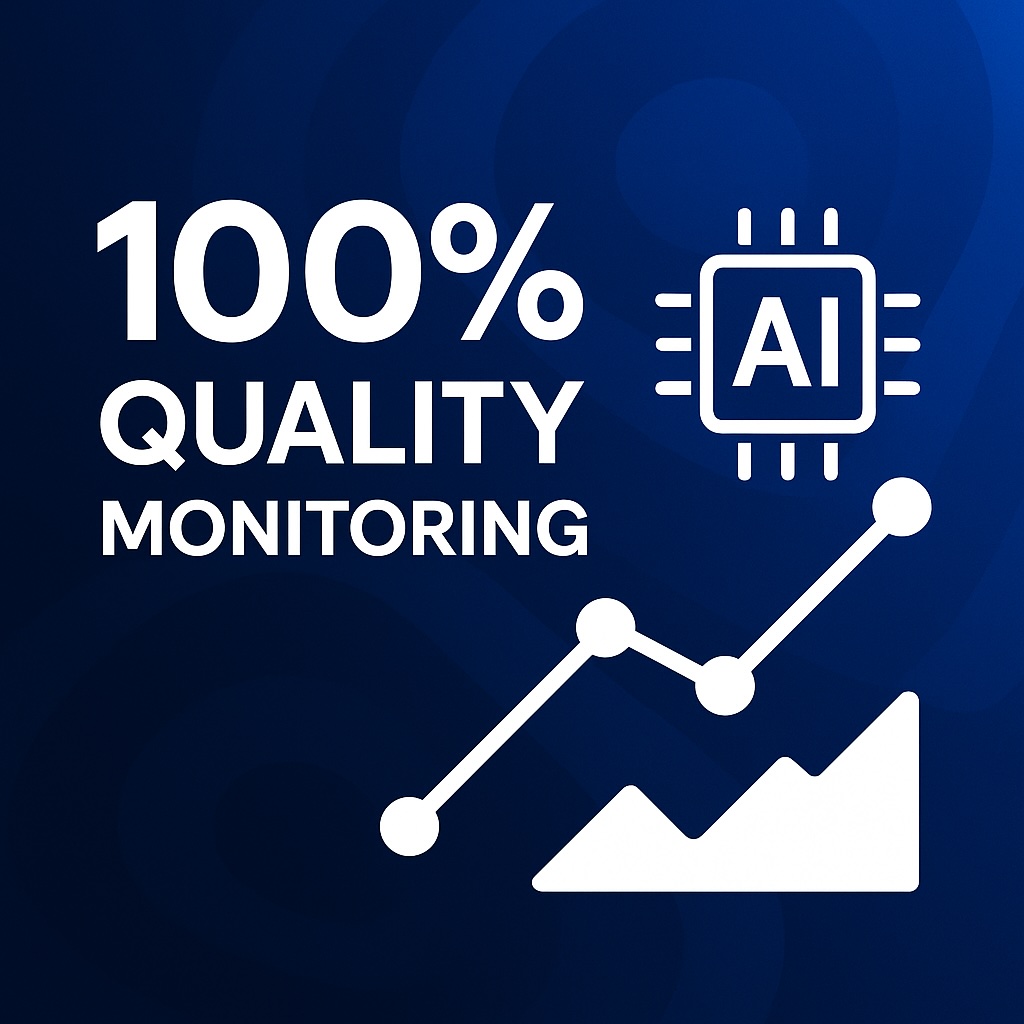
100% Quality Monitoring: Why AI Makes It Possible
From 2% to 100%: A Paradigm Shift
Traditional QA processes are built on scarcity. Because reviews are expensive, teams choose a small sample and extrapolate results from there. But that approach hides as much as it reveals. A few dozen tickets can never tell you the full story of customer sentiment or agent performance. Every organization has lived that frustration: you know something is off, but you can’t see where it is.
AI removes this blindfold. Instead of relying on random sampling, machine learning models can now process every single customer interaction — across voice, email, chat, and surveys — automatically. With this, the QA function shifts from being a manual auditing task to a continuous, data-driven process. Suddenly, nothing escapes your attention. Every escalation, every negative comment, every silent sign of friction becomes visible in real time. What used to be a labor-intensive 2% effort turns into a 100% view of customer reality.
The Economics of Scale
One of the most powerful arguments for AI-driven Quality Monitoring is cost. Traditional QA scales linearly — reviewing twice as many interactions means hiring twice as many people. With AI, that equation changes completely. Once your system is trained, analyzing ten thousand or one million interactions costs almost the same.
This has enormous economic implications. Companies no longer need to choose between quality and cost efficiency. Full coverage becomes the default, not a luxury. Managers can allocate their teams to higher-value work, such as coaching, process optimization, or customer experience strategy, instead of spending hours scoring individual tickets. In short, AI doesn’t replace people — it liberates them from repetitive work so they can focus on improving outcomes.
Speed and Real-Time Visibility
The traditional Quality Monitoring cycle is painfully slow. Analysts spend days reviewing, compiling reports, and preparing presentations. By the time insights reach decision-makers, the situation on the ground has already changed. AI transforms this dynamic by enabling real-time monitoring.
An AI model can analyze thousands of customer conversations per minute, across multiple languages and channels, identifying quality trends or emerging problems as they happen. Managers can act instantly: detect a sudden spike in delivery complaints, spot a product bug reflected in support tickets, or measure the impact of a new policy within hours, not weeks. The result is a living, breathing Quality Monitoring system that evolves as fast as your operations.
Consistency and Objectivity
Human judgment is valuable but inconsistent. Two QA reviewers can read the same ticket and score it differently depending on their mood, experience, or interpretation of the criteria. AI introduces consistency. Models are trained to apply the same rules every time, without bias or fatigue.
This consistency transforms QA from a subjective debate into an objective system of record. Scores become reliable, trends become clear, and discussions with teams shift from arguing over numbers to understanding the underlying behaviors. Human expertise is not removed from the process — it’s enhanced by having solid, uniform data to build on.
Beyond Scoring: Actionable Insights
The real power of full coverage is not just in scoring every interaction; it’s in understanding every interaction. When AI processes 100% of your customer conversations, it uncovers hidden patterns, emerging themes, and deep insights that manual reviews would never surface.
You can see which products drive the most complaints, which regions deliver the best service, which processes create friction, and where customers are most at risk of churn. These insights feed not only support and quality teams but also product, logistics, and marketing departments. Quality Monitoring evolves from a control function into a source of strategic intelligence for the entire organization.
From Frustration to Full Visibility
Many managers feel the same frustration: “We’re investing so much in QA, but we still don’t really know what’s going on.” The problem is not effort — it’s scope. As long as you rely on sampling, you will always see a distorted version of reality. AI allows you to replace assumptions with facts. Instead of guessing what happens in the 98% of interactions you never see, you can finally see them all.
That visibility changes everything. It builds confidence in your operations, speeds up decision-making, and helps you prioritize the right actions based on real, comprehensive data.




